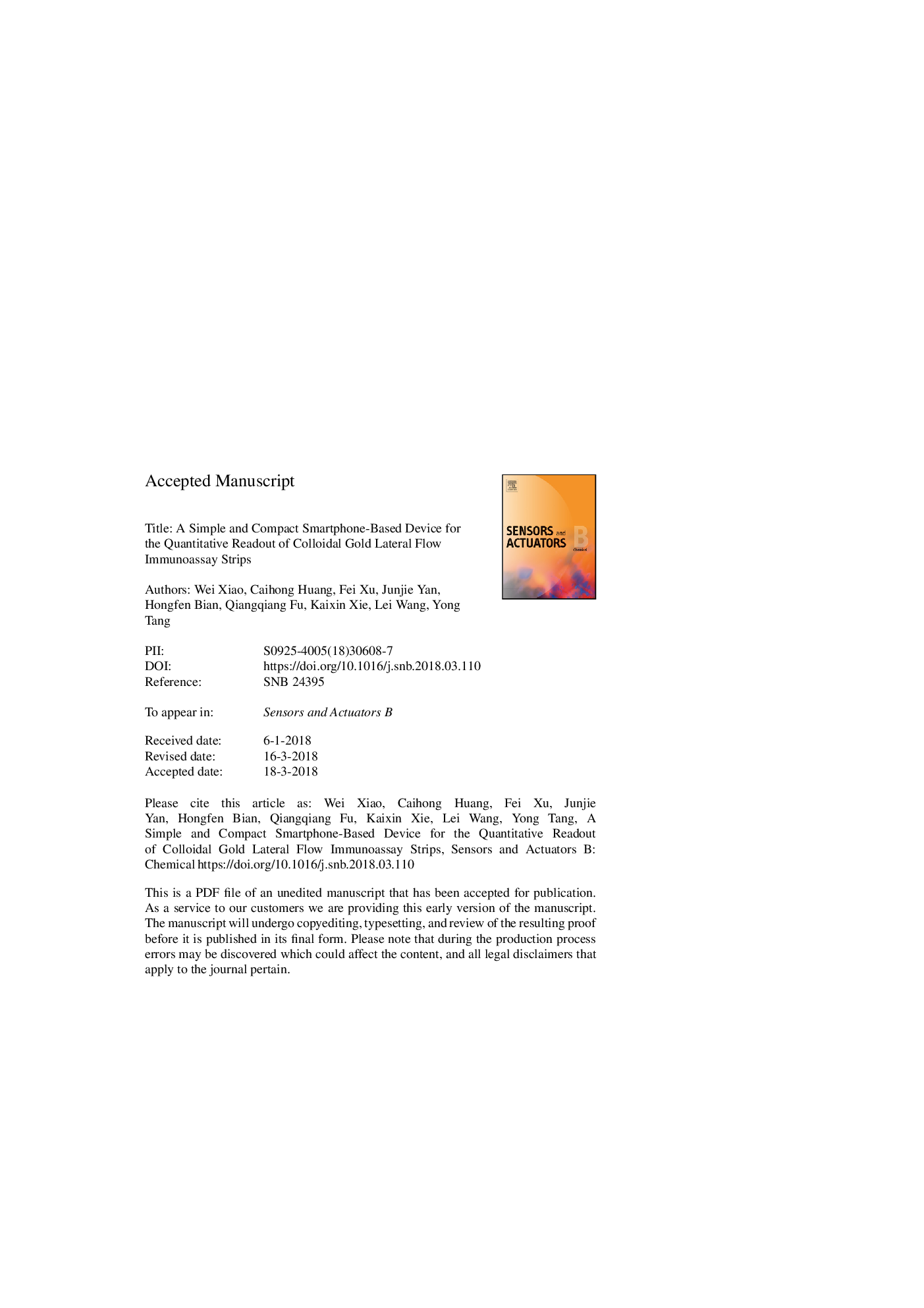| Article ID | Journal | Published Year | Pages | File Type |
|---|---|---|---|---|
| 7139701 | Sensors and Actuators B: Chemical | 2018 | 20 Pages |
Abstract
Colloidal gold lateral flow immunoassay strips (AuNPs-LFIS) have been widely applied as qualitative diagnostic tools for point-of-care tests (POCT). If strip readers were incorporated, their use could be extended to quantitative analysis. However, their cost and non-portability render commercial strip readers unavailable for use in either home testing, community or rural hospital diagnosis. This is particularly true for on-site testing. Here, a smartphone-based reader was designed and 3D-printed for quantitatively assess AuNPs-LFIS. The basic principle of the devise was relying on a smartphone's ambient light sensor (SPALS). This sensor was harnessed to measure the transmitted light intensities originating from the T-lines on the strips, the transmitted light intensities vary with concentration of AuNP on the T-lines. To validate this approach, our newly developed smartphone's ambient light sensor-based reader (SPALS-reader) was used to readout AuNPs-LFIS of three analytical targets: cadmium ion (Cd2+; limit of detection (LOD) was 0.16â¯ng/mL), clenbuterol (CL; LOD was 0.046â¯ng/mL), and porcine epidemic diarrhea virus (PEDV; LOD was 0.055â¯Î¼g/mL). The result showed good consistency with the results of conventional image analysis approaches, indicating that the smartphone-based device is appropriate for use in AuNPs-LFIS readouts. Compared with the traditional analysis method, the developed AuNPs-LFIS reader is easier operated, lower cost and more portable, which provided an on-site quantitative analysis tool for AuNPs-LFIS and enhances the applied range of AuNPs-LFIS.
Related Topics
Physical Sciences and Engineering
Chemistry
Analytical Chemistry
Authors
Wei Xiao, Caihong Huang, Fei Xu, Junjie Yan, Hongfen Bian, Qiangqiang Fu, Kaixin Xie, Lei Wang, Yong Tang,
